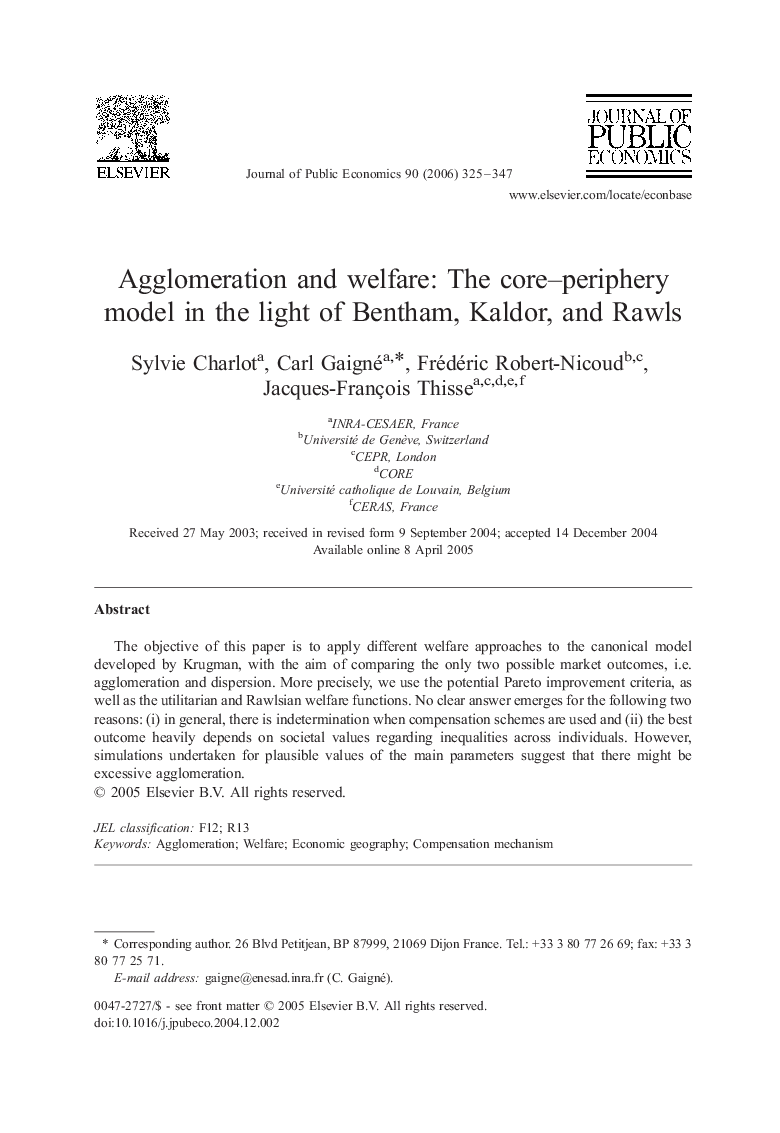| Article ID | Journal | Published Year | Pages | File Type |
|---|---|---|---|---|
| 969612 | Journal of Public Economics | 2006 | 23 Pages |
Abstract
The objective of this paper is to apply different welfare approaches to the canonical model developed by Krugman, with the aim of comparing the only two possible market outcomes, i.e. agglomeration and dispersion. More precisely, we use the potential Pareto improvement criteria, as well as the utilitarian and Rawlsian welfare functions. No clear answer emerges for the following two reasons: (i) in general, there is indetermination when compensation schemes are used and (ii) the best outcome heavily depends on societal values regarding inequalities across individuals. However, simulations undertaken for plausible values of the main parameters suggest that there might be excessive agglomeration.
Related Topics
Social Sciences and Humanities
Economics, Econometrics and Finance
Economics and Econometrics
Authors
Sylvie Charlot, Carl Gaigné, Frédéric Robert-Nicoud, Jacques-François Thisse,
